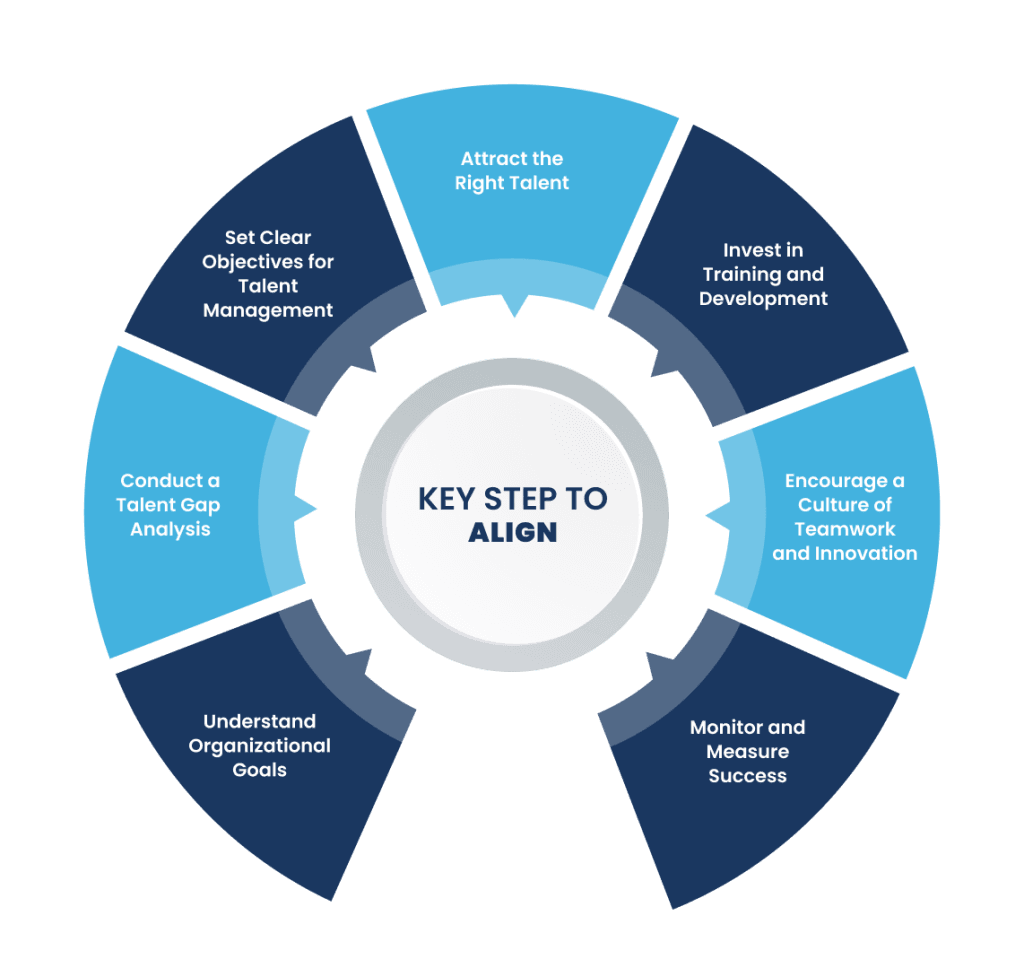Last Updated on –
HR
How to Align Talent Management with Organizational Goals: A Strategic Approach
Talent management is crucial for any organization’s success. It involves attracting, developing, retaining, and utilizing the best talent to achieve the company’s objectives. However, to maximize its potential, talent management must be aligned with the organization’s broader goals. When talent management strategies are in sync with business objectives, it enhances productivity, fosters innovation, and contributes to long-term success.
Here are key steps to effectively align talent management with organizational goals:

1. Understand Organizational Goals
Before you can align talent management with organizational goals, it’s essential to understand what those goals are. Whether the organization is focused on growth, innovation, customer satisfaction, or operational efficiency, each of these objectives requires a specific set of skills and talent. Leadership should clearly communicate the company’s vision and strategic priorities across all levels.
Action Step: Conduct discussions with leadership teams to fully grasp organizational goals and ensure alignment across departments. Ensure every HR initiative supports these goals.
2. Conduct a Talent Gap Analysis
Once you understand the organization’s strategic direction, the next step is identifying the talent gaps that need to be filled. These gaps could be in terms of skills, experience, or leadership. Assess the current talent pool to determine where strengths and weaknesses lie.
Action Step: Use performance reviews, employee surveys, and skills assessments to gather data on your workforce. Compare this with the skills required to meet organizational goals and identify areas for improvement.
3. Set Clear Objectives for Talent Management
Talent management is not a one-size-fits-all process. Each organization has unique needs, and talent management strategies must reflect that. Set clear, measurable objectives that connect talent management initiatives to broader business goals. These objectives could range from improving employee retention to enhancing leadership skills.
Action Step: Define key performance indicators (KPIs) that directly tie to organizational goals, such as time-to-hire, employee engagement, or leadership pipeline strength. Review these objectives regularly to ensure they stay aligned.
4. Attract the Right Talent
Action Step: Design job descriptions and recruitment campaigns that reflect the skills and values needed for the company’s future. Engage in talent sourcing that focuses on long-term potential and cultural alignment.
5. Invest in Training and Development
Action Step: Create personalized development plans for employees based on both their career goals and the skills needed by the organization. Offer ongoing training in leadership development, technical skills, and soft skills that support business objectives.
6. Encourage a Culture of Teamwork and Innovation
A key to organizational success is fostering a culture that encourages collaboration and innovation. Talent management should focus on building teams that work well together and support the company’s innovation goals. Collaboration enhances creativity, problem-solving, and overall productivity, all of which are essential for achieving organizational objectives.
Action Step: Develop cross-functional teams and encourage collaboration through team-building activities and innovation programs. Reward teamwork and idea-sharing to foster an innovative workplace culture.
7. Monitor and Measure Success
Action Step: Regularly assess the impact of talent management programs on organizational goals using data-driven metrics. Measure factors like employee productivity, retention rates, and leadership development success.
Conclusion
Aligning talent management with organizational goals is not a one-time activity, but an ongoing process that evolves as business strategies and market dynamics change. By clearly understanding the organization’s objectives, addressing talent gaps, and focusing on continuous development, HR professionals can ensure that their talent management strategies not only support business success but actively drive it. A well-aligned talent management framework helps businesses stay competitive, retain top talent, and thrive in a fast-changing world.
Envitics Solution Pvt. Ltd. specializes in delivering high quality solutions for different businesses. Contact Us today to safeguard your business and achieve success in the digital age!
